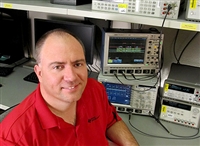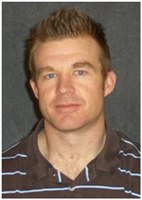As we get ready to "gear up” here on the TI Precision Designs Hub (AKA "The Hub), we thought you might want to first learn a little about the experts who will be sharing their analog design tips with you in the coming weeks and months.
They’ve each provided a favorite tip to keep in mind when designing with analog, along with a brief overview of their analog experience.
Can you match the blogger to his favorite analog tip? Compare your answers with the answer key at the end to see how well you know our experts.
Top 10 analog tips
1. Keep it clean. Contamination from solder flux can deteriorate the surface resistance of a printed circuit board. A 15-minute ultrasonic bath, a quick dry and a 10-minute bake at around 70°C keeps your board clean and free of mysterious performance degradation.
2. Keep it simple. Save power and complexity by choosing a drive amplifier that matches the throughput rate of your analog-to-digital converter (ADC).
3. Keep it communicating. For your ADC and digital-to-analog converter (DAC), always verify the upper and lower limit digital thresholds and how they are set relative to the incoming interface communication lines.
4. Keep it stable. Avoid marginal stability with a square wave stability test in the lab. Adjust input to yield 100mVpp on the output at 1kHz. Look for overshoot and ringing at the operational amplifier (op amp) output.
5. Keep it real. Timing diagrams aren’t always drawn to scale, so avoid interpretation and probe your DAC or ADC SPI bus to verify you are writing what you think before spending
too much time in debug mode.
6. Don’t (over)-stress. Electrical overstress conditions in your application are often due to abuse of ESD protection devices not designed for high, continuous current flow. When in doubt, research and ask about ESD structures to eliminate in-advertent triggering in your application.
7. Total your errors. The real Vos (op amp input offset voltage) is NOT just the max offset in the specification table. Account for PSR (power supply rejection), CMR (common mode rejection), and temperature drift in your application to determine the real Vos.
8. Consider capacitance carefully. Remember additional capacitance and capacitor types can influence performance. A coaxial cable can cause instability or transfer function errors, and high harmonic distortion can result from capacitors with X7R or other high-k dielectric materials.
9. Keep it linear. Instrumentation amplifiers require a close look at the input common-mode voltage linear range to ensure linearity. Always check the "input common-mode voltage vs. output voltage" graphs in the data sheet.
10. A good reference goes a long way. You can typically use a reference with 3x lower noise than your ADC to maintain accuracy and resolution.
The experts you'll be seeing on “The Hub”
Amit Kumbasi
Amit is a systems engineer for precision SAR data converters. In the last eight years, he’s focused on test and board-level design using precision analog and mixed-signal devices, such as op amps, references, instrumentation amplifiers, current loop transmitters, temperature sensors and current shunt monitors.
Amit currently works on automotive designs and in precision design development for SAR data converters.
Art Kay
As the precision applications engineering manager, I support amplifiers, references, and mixed signal devices in industrial applications, such as bridge sensor signal conditioning. I've studied amplifier noise extensively and have published a book and article series on tips for analyzing and reducing it.
Before working in applications engineering, I was a semiconductor test engineer and controls systems design engineer.
Ian Williams
Ian is a precision analog applications engineer with expertise in mixed-signal system-on-a-chip devices, sensor signal conditioning circuits, temperature sensors, printed circuit board (PCB) layout and parasitics, and the LabVIEW development environment. He’s spent a lot of time working on PCB layout and optimizing board-level design for real world environments.
Ian mentors engineering students for their senior design projects and puts his analog and signal processing skills to use as a musician, electronic music producer and DJ. He also builds audio effects, amplifiers and speakers.
John Caldwell
John is a precision analog applications engineer focused on op amps and industrial linear devices. He’s also held applications roles in industrial interface and high-performance isolated power. He specializes in precision circuit design for sensors, low-noise design and measurement, and electromagnetic interference issues.
John brings his passion for engineering home with him. Recent do it yourself (DIY) projects include a low-power blood glucose measurement system and an active loudspeaker design for recording studios – his latest audio project. John has built high-fidelity audio equipment as a hobby for 10 years and has constructed numerous speakers, amplifiers, and phono preamplifiers. When he's not riding his bicycle, you’ll probably find him building something audio related.
Kevin Duke
Kevin is a precision analog applications engineer for DACs, focusing on PLCs and other industrial analog applications. He previously worked as a hardware and software platform developer for precision data converter tools and most recently he developed a familiarity with IEC protection certifications and methods to deliver IEC certified immunity for industrial analog output modules.
Kevin loves sharing his digital and analog knowledge with system designers at TI seminars and Tech Days, in the Precision Data Converter support forum here on the TI E2E Community and in his co-authored blog series, “DAC Essentials,” on Analog Wire. He also enjoys mentoring interns and university projects.
You might run into Kevin at the annual hackers convention in Las Vegas, NV, which he might or might not have attended the last few years.
Matt Hann
Matt is the product line manager for SAR ADCs. He started his career as an analog test engineer, where he developed test solutions for precision amplifiers, instrumentation amplifiers, 4-20 mA transmitters, precision current shunt monitors and power amplifiers. He carried that experience into subsequent roles - applications engineer and later applications manager, where he developed a focused expertise designing analog front ends (AFEs) for medical applications, such as ECG, EEG, EMG, blood glucose monitoring, and pulse oximetry.
Matt is also a contributor to TI’s “Signal Chain Basics” series on Planet Analog.
Pete Semig
Pete is a precision analog applications engineer with expertise in difference amplifiers and instrumentation amplifiers, specializing in current sensing. He co-authored a series of articles on current sensing that was the most popular power management technical article of 2012, according to EETimes-Europe.
Prior to joining TI, Pete was a faculty member at Michigan State University’s Department of Electrical & Computer Engineering, where he taught a variety of courses and laboratories. While there, Pete received multiple annual service awards for teaching excellence, as recognized by his students.
Pete’s passion for teaching will no doubt come through here on “The Hub."
Tim Green
Tim is a senior precision analog applications engineer. He currently focuses on optimizing op amp macromodels to match real silicon.
Tim’s love of demystifying highly complex technical concepts earned him the nickname “Wizard of Zo” after his thorough analysis and research into op amp open loop output impedance (Zo) and op amp stability. He even wrote a 15-part article series on op amp stability for EN-Genius.
Tim has more than 31 years of experience in brushless motor control, aircraft jet engine control, missile systems, power op amps, data acquisition systems, CCD cameras, power automotive audio, and analog/mixed signal semiconductors.
Tony Calabria
Tony is a precision analog systems engineer. He’s spent the last five years focused on precision DACs and delta sigma ADCs. In addition to blogging here, Tony co-authors a series with Kevin Duke on Analog Wire called “DAC Essentials.”
Outside of work, Tony applies his engineering skills to home audio, and on occasion, has has been known to hand solder 0201 resistors to create abstract art.
Vaibhav Kumar
Vaibhav is an analog design manager specializing in precision amplifier IC design, references and mixed signal devices. Over the last five years, he’s focused primarily on precision amplifiers and has developed a passion for high-precision ADC driver amplifiers and references that complement TI’s SAR ADC and delta sigma ADC portfolio in industrial data acquisition (DAQ) systems.
Vaibhav is involved in cutting-edge research at universities across the world and is an IEEE publication reviewer for several conferences and journals, including the International Symposium of Circuits and Systems (ISCAS).
Answer key
1-Keep it clean: Ian Williams; 2-Keep it simple: Matt Hann; 3-Keep it communicating: Tony Calabria; 4-Keep it stable: Tim Green; 5-Keep it real: Kevin Duke 6-Don’t (over)-stress: Vaibhav Kumar; 7-Total your errors: Art Kay; 8-Consider capacitance carefully: John Caldwell; 9-Keep it linear: Pete Semig; 10-A good reference goes a long way: Amit Kumbasi






